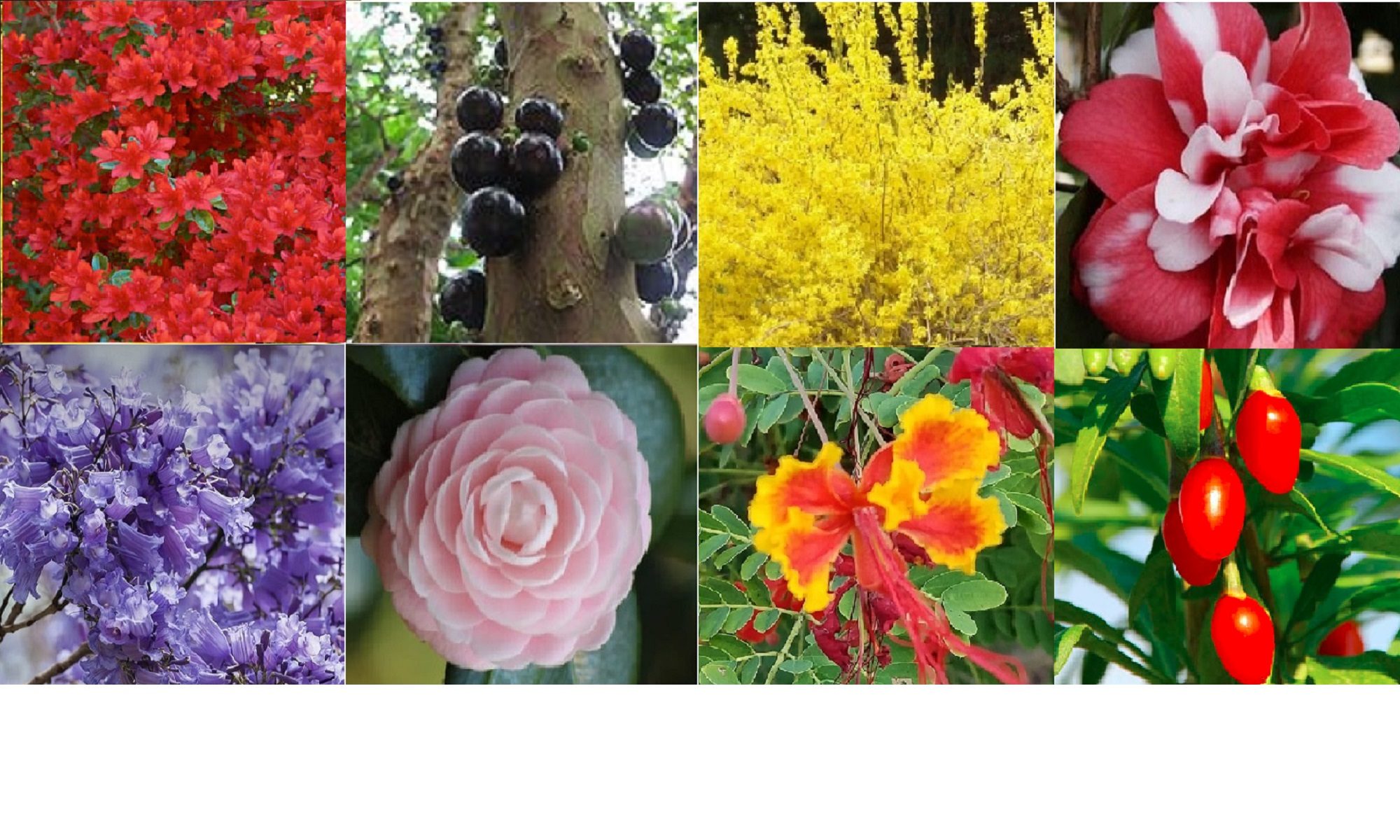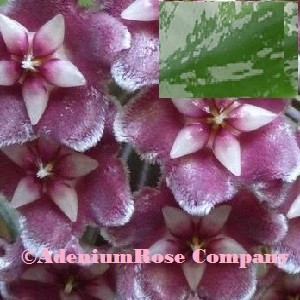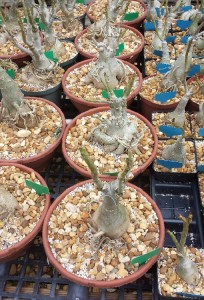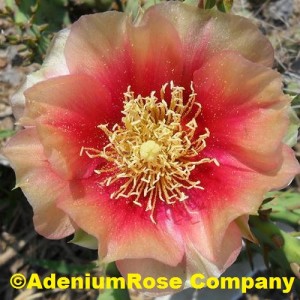There are well over 200 varieties of hoya plants – some very common and some very rare / hard to obtain. AdeniumRose Company is in the process of having rare hard to obtain hoya plants contract grown to be ready to ship to us in January. The hoya plants are being grown from small clippings in a very controlled environment to greatly improve success rate and root growth rates. Here in Southeast Florida we are propagating from cuttings with a very high success rate in a 75% natural light screened area. Since we just about always warm in southeast Florida we are able to start hoyas from clippings just about year round without heat lamps or artificial lights.
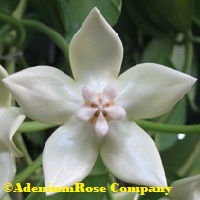
The clippings we are using have 3..5 leaves on them and many have small roots one the vines before we take the clipping. Some varieties of hoyas do not produce roots along the vines in the air (out of soil) so the success rate of growing from those hoya plants cuttings is lower. Once we clip a section of the parent hoya plant we wait 3 days before we soak the clipping in Dyna-Gro K-L-N for 20 minutes – we do not use powder rooting hormones. After soaking the clipping the plant is placed in soil and then watered 24 hours later. Do not water right away. It’s better to give the plant time to absorb the K-L-N nutrients for 24 hours first.
Presently we are growing 15 different hoyas types from cuttings at our Miami facility. Here is a list of the hoya plants we are having contract grown for us in Thailand which we should received in late January or February and then ready to list on our site around May:
hoya Pink Archboldiana
hoya rotundiflora (sp.square leaf)
hoya anulata
hoya blashernaezii
hoya caudata
hoya darwinii
hoya lucardenasiana
hoya sigillatis
hoya glabra
hoya lobbii “cream flowers”
hoya lobbii “dark red (black) flowers”
hoya neo-ebudica
hoya flagellata
hoya halconensis
hoya forbesii
hoya montana
hoya caudata sumatra
hoya alagensis
hoya erythrostemma “QSBG”
hoya sp. chicken farm
hoya sp. miari jaya 58
hoya imperialis “white flower”
If you have questions or special hoya variety request please let us know. If we have a parent plant or obtain one we can have hoyas desired grown here in Miami or Thailand.
